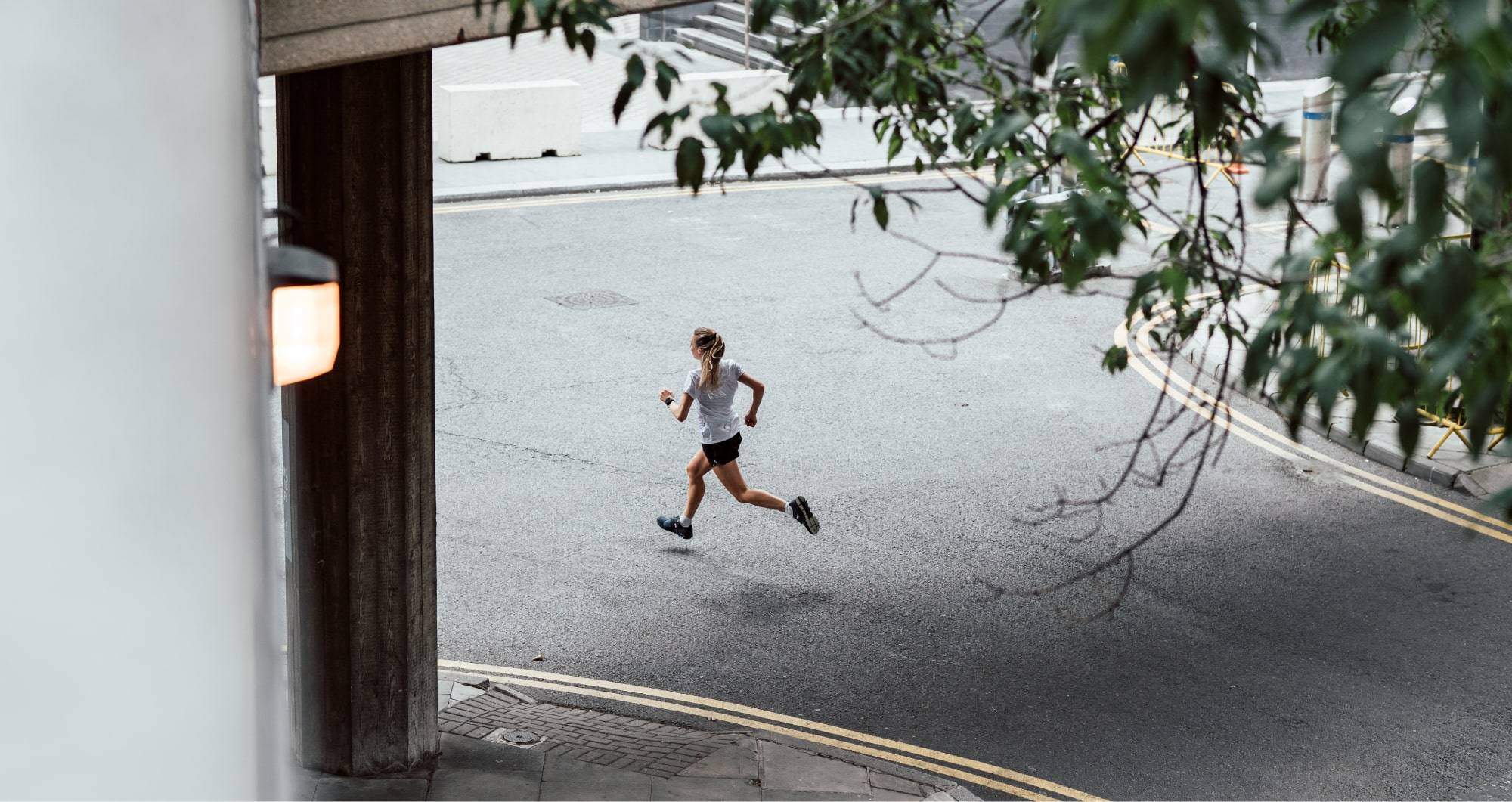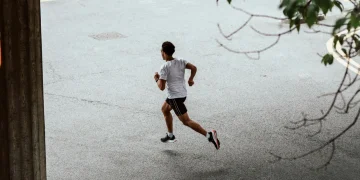Running may seem pretty straightforward. But you would be surprised by all the common running mistakes people make: from having a bad running form to running too much to wearing inappropriate clothes.
Whether you are a pro or just learning to run properly, you should always keep these 7 typical running problems in mind to avoid them.
1. Wearing Inappropriate Clothes
Fashion is usually a very subjective matter. However, when it comes to running, your choice of clothing may impact not just your looks but your performance as well. There are many ways to dress wrong, so let us look at a few cases.
- Avoid over or underdressing. There is no good reason to wear a coat in blistering heat. Not only will you suffer from overheating, but you also risk chafing. You also should not be half-naked if it is freezing outside since you could catch a cold or, even worse, suffer from hypothermia.
If it is hot outside, we recommend wearing loose-fitting light-colored clothes. For cold weather, you should assume you will feel 15-20 °F warmer than the temperature outside due to your body warming while running. Therefore, you might want to pick clothes that are a little bit less warm than you usually wear for a walk.
- If chafing is a serious issue, you might want to try something with a skin-tight fit, such as compression shorts.
- Choose proper materials. We highly recommend you abstain from running in cotton clothes (at least at the skin layer) as they do not wick the sweat from your skin. This leads to discomfort in warm weather and dangerous situations when it is cold. It is much better to choose technical fabrics, such as DryFit, Thinsulate, Thermax, CoolMax, polypropylene, or silk.
2. Choosing Wrong Shoes
Just like with clothes, shoes can be a deciding factor in your performance.
One of the first things you need to consider when learning how to run safely is your shoes. Wearing shoes that do not fit your running style can lead to running-related injuries. The solution is simple—go to a running specialty store and consult an expert. They will help you pick suitable shoes depending on if you are an overpronator, supinator, or neutral runner.
You should also consider replacing your shoes every 300–350 miles since the loss of cushioning may lead to additional injuries. Alternatively, you can buy new shoes when the old pair is halfway through its life. This way, you can alternate between two pairs to prolong their life.
3. Running Too Much
This is one of the most common marathon training mistakes. It plagues even casual runners. You might think that the more you run, the better results you will get. But increasing mileage too quickly, running too fast, and having enough rest can actually have an adverse effect.
Results can be a kind of a drug, and pushing yourself to achieve more miles at faster speeds can get addictive very quickly. However, progressing too quickly can lead to a variety of injuries. Therefore, we recommend being more forgiving to yourself when training—nobody is going to punish you if you do not run those additional miles.
Not resting enough or hyper-focusing solely on running routines can also be detrimental to your physical and mental health. Overtraining leads to injuries and burnout, so we recommend not neglecting rest days, especially after challenging races. You can also have rest weeks every fourth week, decreasing your mileage by up to 50%.
On your rest days, you can do stretching or strength exercises. Such cross-training can help develop muscles you do not train while running, leading to better overall performance.
4. Poor Running Form
One of the most frequent running mistakes made by beginners is developing poor running techniques and habits. This complex issue includes bad head alignment, poor upper body posture, and bad landing technique.
When running, you should always look directly ahead—not up or down. This may feel weird at first, but it will reduce your running effort and let you see the views around.
Good posture is vital for proper running form. We often see runners with tensed or slouched backs and shoulders. This position might feel natural in the modern world, but when running, it decreases your efficiency.
Another thing to keep in mind is your hands. Many runners are either too eager, swinging their arms like they are at a rave party, or too locked up, keeping their arms close to their chest. You should keep your hands near your waist so they could lightly tap your hips. Keep a 90-degree angle with your arms. Rotate your arms at the shoulder to get that back-and-forth swing.
Finally, landing techniques are critical to your efficiency and injury prevention. Many runners think that overstriding will lead to better results when, in reality, it only reduces your running efficiency and leads to higher injury risks. Moreover, and this is usually subconscious, new runners tend to land on their heels, leading to similar dubious results. To fix this issue, try to land mid-sole with your foot directly underneath your body.
5. Bad Breathing Technique
Another common rookie mistake is not breathing correctly. Many runners think that breathing through the nose is enough. While inhaling through the nose is preferable since it has additional germ protection compared to the mouth, there are no drawbacks to exhaling through your nose and mouth. Doing so accelerates carbon dioxide removal from your body, which boosts your running endurance.
Another common running mistake is breathing shallowly with your chest instead of deep breaths with your belly and diaphragm. This requires conscious effort to overcome, but you can do breathing exercises when not running.
The debate on random vs. rhythm breathing is not yet settled in the running community, so we recommend going with whatever feels more comfortable.
6. Not Drinking Enough
One of the most common training mistakes, which extends to all athletes in general, is not drinking enough water. Dehydration usually leads to fatigue, headaches, decreased coordination, nausea, and muscle cramping. Moreover, this could lead to heatstroke on hot days.
The general recommendation is to drink 6–16 oz. of water or a non-caffeinated beverage one hour before you start running.
Your body is excellent at telling you whether you need to drink, but it is terrible at telling you when to stop. Therefore, you need to calculate how much water your body needs while running. Weigh yourself before and after running and divide the weight you lost by the number of hours you ran. This will give you your sweat rate. Then divide your sweat rate by 3 or 4 and drink this amount every 20 or 15 minutes, respectively.
If your workout is long (90+ minutes), we recommend replenishing your sodium and electrolytes with a sports drink.
Your urine is a great indicator of hydration. If it’s dark yellow after a workout, you’re slightly dehydrated. If crystal clear, you may have outdone yourself. The ideal color is light yellow.
7. Underestimating Diets
Another big training mistake made by beginners is made outside of running — having poor eating habits and not following a diet. How we eat significantly impacts our performance, so here is how to do it properly.
We advise eating lightly before the race, choosing a snack high in carbs and low in fat, fiber, and protein—something like a protein bar, a few bananas, or a peanut butter sandwich. Do so 1.5–2 hours before a run.
If you are running for over 90 minutes, you will need a quick recharge during the run. A general rule of thumb is to eat 100 calories after your first hour and then 100 calories every 40–45 minutes. This mid-run snack could be a sports drink or an energy bar.
We recommend eating within 30 minutes after you finish training. This will help you rebuild glycogen faster and reduce soreness the next day. You primarily want to eat carbohydrates with a bit of protein, with a 3:1 ratio. A good-old PB&J or a fruit smoothie could be great post-run snacks.
Most importantly, you should not follow low-carb diets when training, as you will burn through them insanely quickly while running.
Conclusion
These are our 7 common running mistakes. We hope our beginner running tips taught you how to run better, with more efficiency and fewer risks of injuries.






